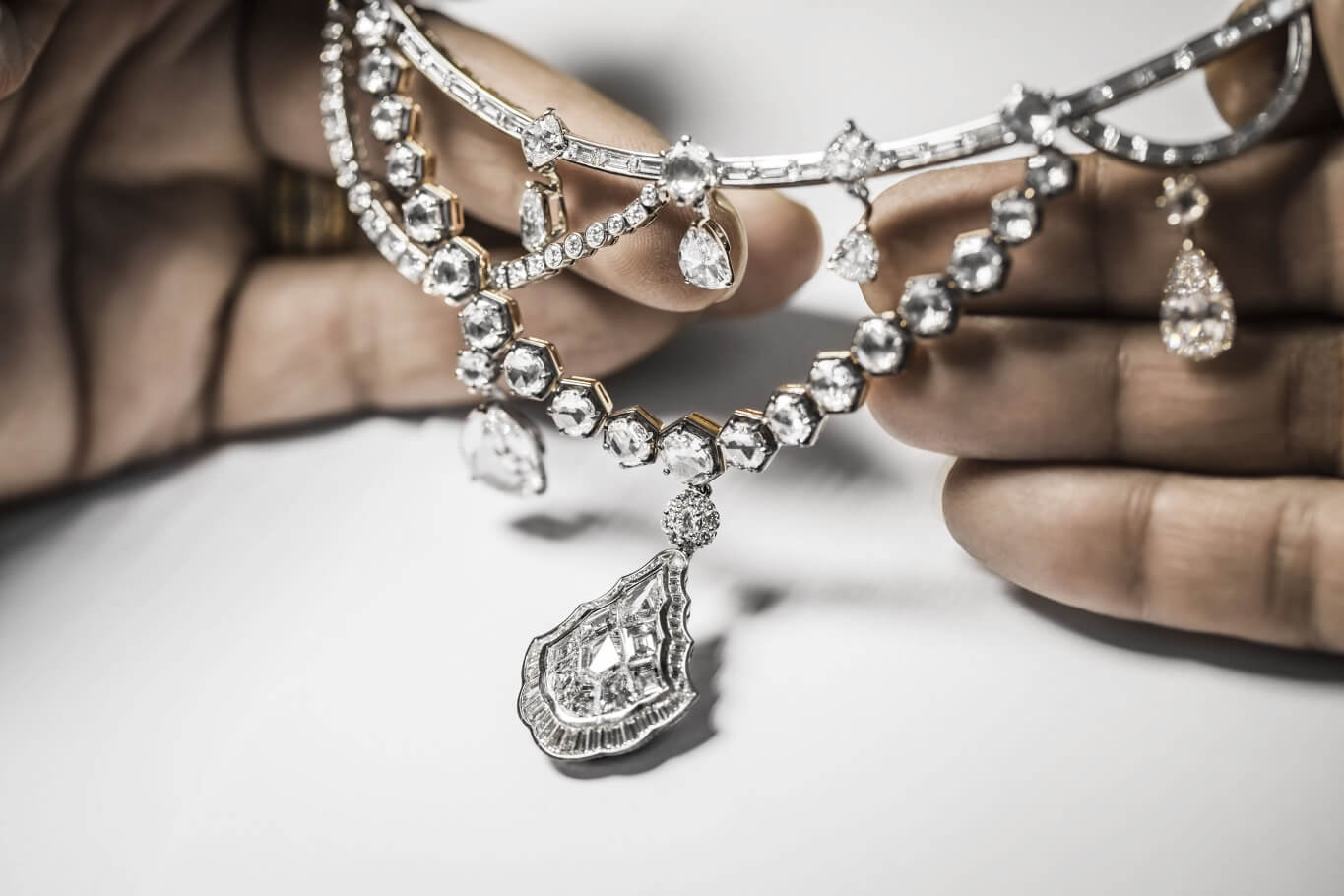The Rule of Asymmetry in Haute Joaillerie
Every summer, Paris Couture Week provides an opportunity for high end jewelers to present their most dazzling and elaborate haute joaillerie creations. This year, jewelry designers embraced asymmetry in many of the one-of-a-kind pieces, be it in the the overall design or in their use of multi-shaped stones.
Leading the way was the high jewelry collection of Dior. Victoire de Castellane, Dior’s artistic director of fine jewelry, has never much cared for the “classic” with her pieces characteristically mixing bold coloring with unusual, and often intriguing, shapes. Her latest collection, “Dior à Versailles,” continued the brand’s love affair with the famed Palace of Versailles, but rather than focus on its orderly perspectives and architectural alignments, de Castellane looked at its richly decorated interiors, full of Baroque details.
De Beers' Thames Path
Versailles’ interiors incorporate heavy gilded plaster moldings, paneled wood floors, and large sculpted sideboards, gold brocade, glistening crystal chandeliers, and ornate mirrors. The jewelry designer looked at these elements and in particular the carved ribbon details on the paneling of the Salon de l’Abondance, the chandeliers of the Hall of Mirrors (for chandelier earrings), the floral tapestry of the ladies’ apartments, as well as the Sun symbols that can be found throughout the palace and feather motifs, and transformed them into richly detailed asymmetrical rings, bracelets, earrings, and necklaces.
“I tried to imagine Versailles by night, with its interior illuminated by candlelight that made gemstones sparkle,” de Castellane explains.
In a nod to 18th-century jewelry-setting techniques she used oxidized silver to set some jewels, while also contrasting rose-cut and briolette diamonds with more contemporary baguette-cut diamonds. The results are highly original designs with a variety of stones that gives a thoroughly contemporary look to the classicism of Versailles.
De Beers also explored the idea of mixing different diamond cuts when it created its latest high jewelry collection, which was inspired by landmarks around the Thames in London, from the former Battersea Power Station with its Art Deco feel to the Albert Bridge
François Delage, CEO of De Beers Diamonds Jewelers, says the pieces had been created to represent and “encapsulate the magical light that dances” on some of London’s iconic landmarks and reflects on the Thames.
“The idea was really ‘How can we represent the amazing light that you find in London if you were passing along the Thames, and how that light would also reflect in the water?’” Delage explains.
De Beers’s jewelers created movement in the sculptural pieces by mixing round brilliants with oval brilliants, emerald-cut diamonds with marquise-cut diamonds. Most successful was its interpretation of the winding movement of the river and its adjacent walkway realized through a series of sinuous diamond lines with a crossover of marquise and round diamonds at the center of the necklace creating an interesting asymmetry.
Chaumet
At Piaget, asymmetry could also be seen across its “Sunny Side of Life” collection, which captured the radiant spirit of Palm Springs, with vivid, contrasting colored stones (emeralds, unheated sapphires, black and yellow diamonds). This was a collection drenched in sunlight (using pink gold and radiant design details) with a nod to lazy afternoons by the poolside (with mosaic patterns) and lush nature (palm trees and flamingos).
“We wanted to create a collection that made clients shine and also makes them happy,” explains Jean-Bernard Forot, jewelry marketing director at Piaget.
Piaget’s jewelers explored the many facets of gold, showcasing their skills with the metal, in hammering, cabling, hand-weaving mesh, and engraving it with the the ‘palace décor’ technique that gives it a fabric-like quality.
Many pieces showed a distinct asymmetry, which has long been a style followed by Piaget.
“If you look at the early cuffs we did in the ‘60s, the watch was never at the center, it was always off-center. So I think that when we talk about our codes, we have to be asymmetrical, not all the time, but often. So for us it’s not really an evolution, but closer to what we are,” Forot says.
First published in the Fall edition of Blouin Lifestyle Magazine.



